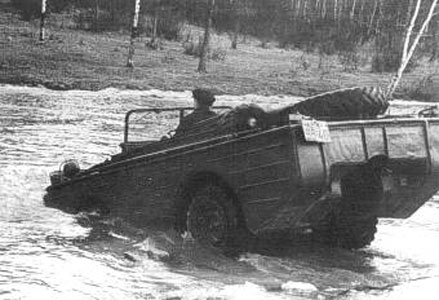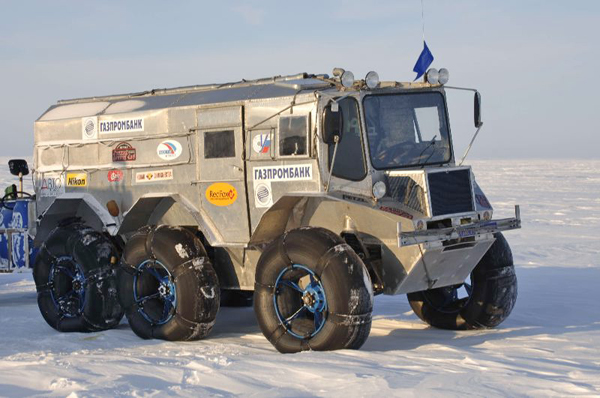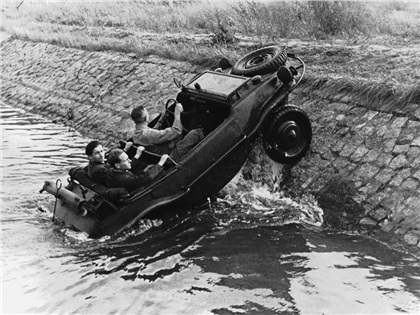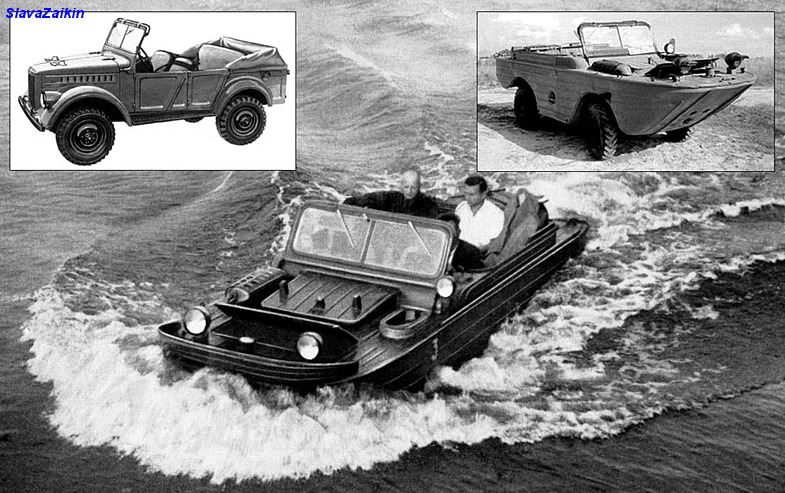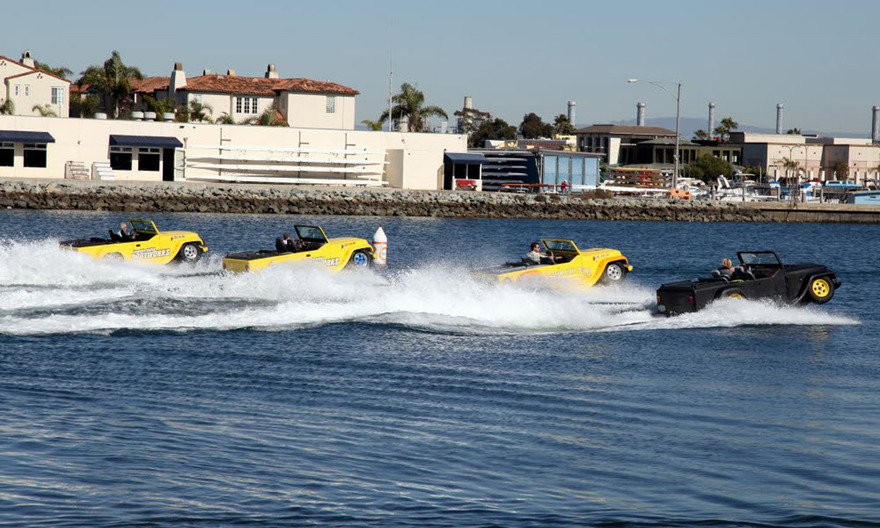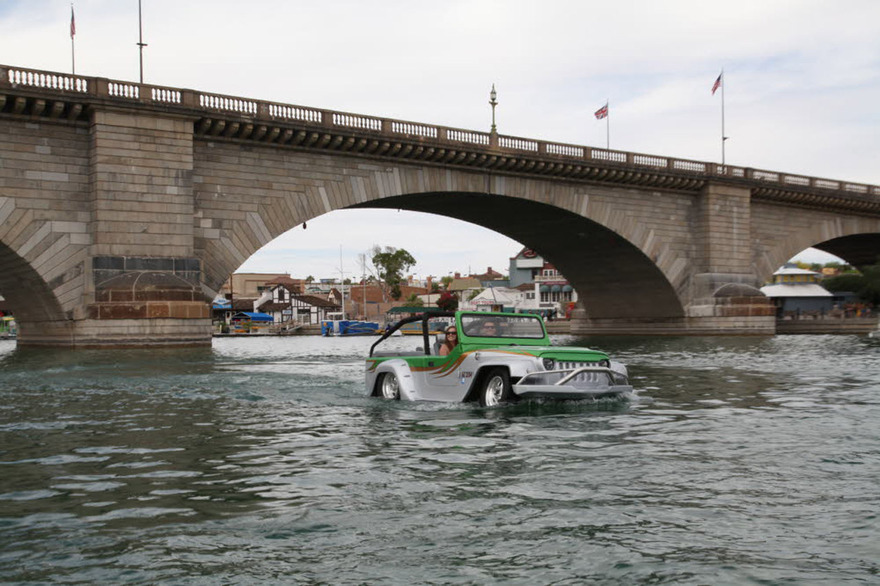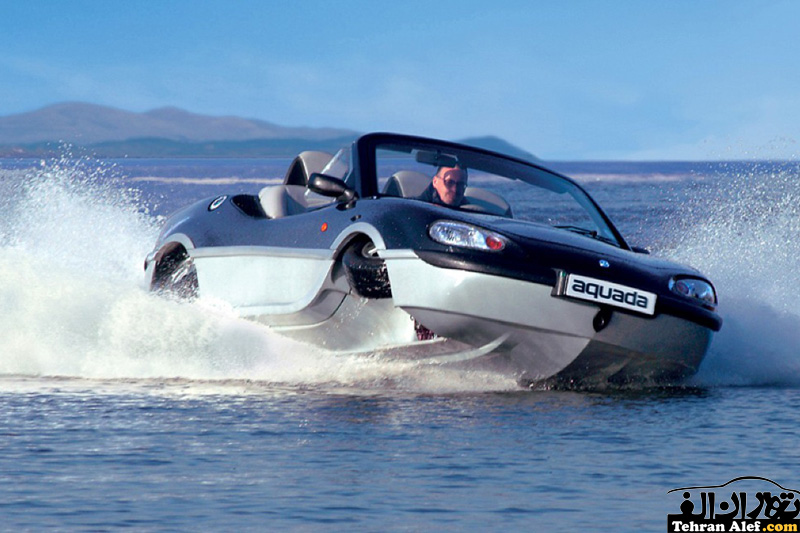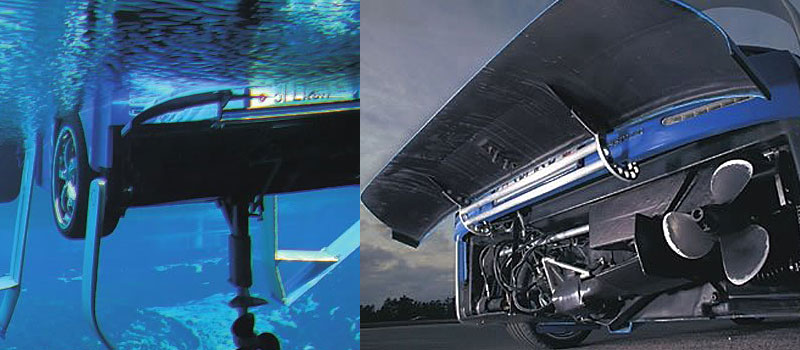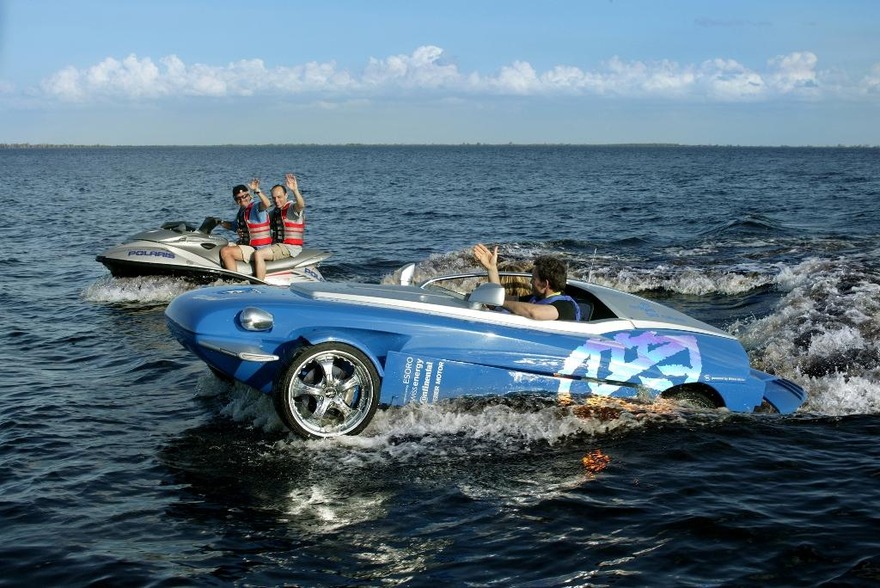It is never enough for humanity. That is why progress keeps rolling. Even though people have not invented a car flying into the sky on road turns yet, the engineers have been developing cars floating on water for a couple of decades now. A fisherman or a hunter, an adventurer or a car enthusiast. All of them dream about an amphibious vehicle capable of moving fast and nimbly both on land and over water.
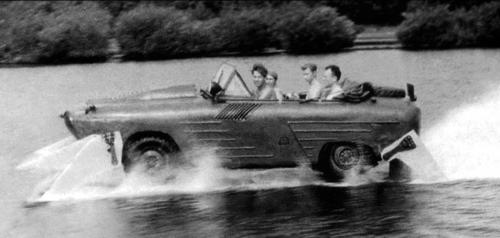
First projects of unique cars were developed back in the USSR. Among other odd units, the engineers created vehicles based on the all-wheel drive passenger car Moskvitch-410, providing it with a streamlined all-metal body and a smooth bottom. One of the major achievements was an independent suspension for all drive wheels, which were retracted into special bays with the help of a rear water propeller mounted on an extensible frame fitted with a reduction unit. Soviet people have never been looking for easy ways. As they say, life is hard but that’s what makes it interesting. An amphibious vehicle with an official name of “NAMI-055” was equipped with a water drainage pump and carried a spare wheel on the boot lid. It was powered by a 41-hp engine borrowed from Moskvitch, with its air-cooling coming from the car’s body, and an independent rotor drive driven by a layshaft. This wonder car weighing 1,560 kg was able to accelerate to 12.3 km/h on water. Looks more like a snail, doesn’t it?
The second modification of the NAMI fitted with a 90-hp naturally-aspirated V8 engine borrowed from the Tatra-603 increased that speed only by 2.2 km/h. However, the latest project developed by this institute in the sphere of floating military vehicles in 1989 was a great success. The car was designed to deliver rapid reaction units and was actually a combination of a lightweight amphibian, armoured vehicle and a frontline transporter. Multitask like Julius Caesar. One could even take it to the battlefield, if it were capable of firing.
However, the most prominent national record-breaker was created by the engineer Vasily Yelagin. It was used for execution of tasks set by the 2008–2009 Marine Live-Ice Automobile Expedition. The vehicle dubbed “Yemelya” was not leaving any marks on ice. Utterly fuel-efficient, comfortable and autonomous enough, the “stout fellow” helped the Russian scientists to conduct this ambitious expedition successfully. And this one can do fighting patrols.
Well, of course, a foreign car manufacturer is different from a USSR scientist. His target is mass production. That is why the first production amphibious vehicles were produced not in our country but in a prosperous Germany in 1961–1968. The name of that car was “Amphicar”; however, its speed left much to be desired.
On the other hand, Porsche’s vehicles ordered by Wehrmacht were rather impressive. An amphibious car VW Type 166 played a very important role in offensive operations of the German Army. The military men did not have enough imagination to come up with a proper name, so the amphibian got a rather boring “Schwimmwagen” name, which actually means “a swimming car”. By the way, Porsche’s chief engineer Erwin Komenda, the “father” of the Porsche 356 sports car, which set the beginning of Porsche’s history, (ссылка на статью о Порше 356) had actually designed the body of the amphibian.
However, the Schwimmwagen was not the only one. It had a strong rival on the battlefield — American Ford GPA, created around the “great grandfather” of the modern Jeep. Even though it hit the production lines only in 1943, Americans started churning it out so diligently that were able to catch up with their competitors over the next two years, producing 12.8 thousand of amphibious cars. Later, this model was used as an example when building the first Soviet amphibian — GAZ-46 MAV (small floating car), built around the off-road GAZ-69, called “the goat” in ordinary parlance. However, none of them was either powerful, or manoeuvrable.
But who is the major contender to the title? Which amphibian is the most manoeuvrable in the ocean waters and the fastest on dirt and asphalt roads? We will serve the main record-breaker among amphibious cars to you hot on a frying pan right after the appetiser.
Third place among the three giants for today is taken by the “WaterCar”. It is the only company manufacturing such wonder cars to the present day which is not going to rest on its laurels. Their first try — the Python — carries an engine borrowed from the Corvette Z06 delivering 437 hp. It sprints from naught to 100 km/h in only 4.5 seconds! However, the major company’s achievement is the Panther.
It features a six-cylinder Honda engine, a fibreglass body, and light metal chassis. It has an astonishing ability to convert into a boat in less than 15 seconds. In addition to that, it is fitted with Jeep Wrangler’s lights and 4-speed manual transmission allowing you to move in water as easily as Neptune himself. Its top land speed is 128 km/h and it reaches the speed of 70.4 km/h in water, which leaves it just a “pinch of salt” behind the “Aquada”.
One more detail. Its water propulsion system, which replaces the engine used when driving on land, was in-house developed by WaterCar’s engineers. All these specs make the amphibian truly expensive. Its price has not been disclosed yet, even though the car is available for pre-order starting from July 1, 2014.
An even faster “floating” car was built 11 years ago, becoming second fastest amphibian. In 2003, Britain’s pride, the Aquada, was accelerating to 160 km/h on land and 80 km/h over water. As of today, it is the fastest amphibian in terms of converting the car into a boat. Even the modern technology was not able to beat this record. When entering the water, computer systems retract the Aquada's wheels in wheel arches in just 6 seconds!
The record-breaking amphibian was built one year later. The extraordinary Rinspeed Splash concept car revealed at the 2004 Geneva Motor Show has beaten all records — its top land speed is 200 km/h. However, the speed over water is the same. For so many years, the speed of amphibious cars cannot rise beyond the mark of 80 km/h.
Rinspeed Splash is based on a unique floating technology applied when entering the water. With the touch of a button amphibian’s wings unfurl underwater and propeller deploys at the rear. Still accelerating, the car flies above the water like an air-cushion vessel. But what adds a little bitterness to this dish is that this car needs more time for the transformation process than other amphibious vehicles. What is even worse in Rinspeed Splash, is that you have to be around 1.5 metres deep in the water to start converting it into a “floating boat”. That’s not far away from a submarine, isn’t it?
A floating car, an amphibious car. Whatever you call it, it is a true technological wonder. A true product of 21st century technology.

